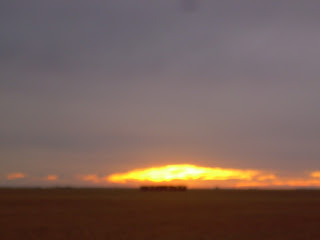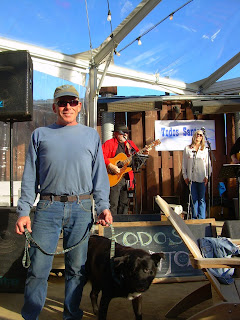28
January, 2013 Russellsville,
Arkansas
Leaving Texas
The fourth day of July
Sun so hot
The clouds so low,
The eagles filled the
sky,
-Weir, Hunter
We left Amarillo under clear morning skies, sunburned from a
tailgate in the pool area, somewhat culturally deprived from not seeking out
the heart of the city. After having had tailgates in the Arizona and New Mexico
deserts in clear weather, we had missed the opportunity in Thursday’s and
Sunday’s rain.
The traffic had been relatively light, and all we faced was
the insane manifesto to cross Oklahoma without stopping. We stopped three or
four times, and ratified the agreement to mean not spending the night.
Central Oklahoma
Is my land, it’s my
country
Eastern Oklahoma is a
beautiful sight.
Northern Oklahoma
might as well be Kansas,
Never go to Southern
Oklahoma at night.
-John Fullbright
The land went back to flat, as far as the eye could see in every
direction. It began to be relieved by silhouettes of treelines at the perimeter
of fields, a sense of scale moderating the emptiness. Then it began to drop
away into canyons, and rise, and undulate.
As Oklahoma plays a pivotal role in both sides of my family,
I felt a certain compulsion to stop and do research. As it maintains a
reputation for roadside shakedowns, searches and seizures, and draconian
marijuana sentencing guidelines, I declined the first urge.
The border of Arkansas came nary a minute too soon, and we
strangely found ourselves in a dry county. I’d heard of such things, but never
had to contend with one firsthand. Somewhere in the highway netherworlds of
traffic stations and cheap motels, we found ourselves checking into a motel,
and having the dry zone described as twenty miles in every direction.
I couldn’t help but wonder if the proprietor wasn’t the
source of such a mandate, being the epicenter and all.
We’re attempting to make Louisville tomorrow, after which we
hope to attain our smokehouse climes the following day, or if the weather’s
good….maybe enjoy the penultimate day of the journey at Seneca Rocks.
We had stopped for lunch east of Hydro, west of OK City by
some 40 miles, at a Sonic drive-through. I noticed that most of the guys who
were waiting for their orders were wearing green coveralls with a graphic that
looked like a smokestack holding a pistol. Closer examination revealed the
brand, FracTech, and I knew we were in deep, dark fracking enthusiast country.
The earthly violence of fracking has been politically tied
to jobs in a move to decrease the apparent dangers to the land, water supply and
seismic stability. As of this juncture, the earthquake that had its epicenter
near Mineral Virginia August 23, 2012 has been connected to fracking activity roughly 100 miles
away. It’s not far removed from a jobs program to destroy the Earth.















































